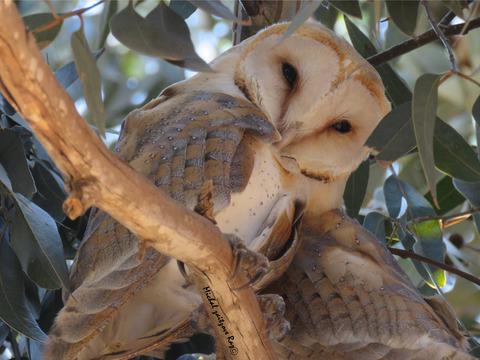当前位置:
X-MOL 学术
›
Anim. Conserv.
›
论文详情
Our official English website, www.x-mol.net, welcomes your
feedback! (Note: you will need to create a separate account there.)
Barn owls as biological control agents: potential risks to non‐target rare and endangered species
Animal Conservation ( IF 2.8 ) Pub Date : 2020-04-07 , DOI: 10.1111/acv.12576 M. Zaitzove - Raz 1, 2 , O. Comay 1, 2, 3, 4 , Y. Motro 5 , T. Dayan 1, 2
Animal Conservation ( IF 2.8 ) Pub Date : 2020-04-07 , DOI: 10.1111/acv.12576 M. Zaitzove - Raz 1, 2 , O. Comay 1, 2, 3, 4 , Y. Motro 5 , T. Dayan 1, 2
Affiliation

|
Rodent agricultural pests cause significant food loss every year. Attempts at mitigation via chemical pest control may cause secondary poisoning and harm non‐target species. Biological pest control by bolstering barn owl Tyto alba populations through the provision of artificial nest boxes is in use in several countries. The national biological pest control project of Israel began in the early 1980s in the Mediterranean zone and was subsequently expanded to the northwestern Negev desert, including areas adjacent to nature reserves and natural sand dunes, a threatened habitat in Israel. We analyzed prey of barn owls in the northwestern Negev to determine whether owls preyed on non‐target endemic, threatened rodents. A total of 14 632 prey items were collected from 95 nesting boxes between 2013 and 2016. We found that barn owls feed on protected and locally endangered species such as Gerbillus andersoni allenbyi (vulnerable − VU), Gerbillus pyramidum (VU), the endemic Meriones sacramenti (endangered) and Gerbillus gerbillus (critically endangered). These species constitute a significant proportion of barn owl diets (sometimes more than half of the prey items in a single nest box), especially in areas under 5 km from sand dunes, suggesting that bolstering the barn owl population may threaten locally endangered species. It could be hypothesized that agricultural crops serve as a resource for endangered species, allowing their numbers to increase, in which case their conservation status should be reassessed. However, extensive rodent trappings in agricultural fields in the region revealed <1% Gerbillus individuals, while in nearby dunes only gerbils were trapped. Insufficient data are available to assess whether or not M. sacramenti could have become a local pest. Our study highlights the risks that may be associated with the use of barn owls as rodent control agents in areas where natural open landscapes and nature reserves are interspersed with agricultural landscapes.
中文翻译:

仓鼠作为生物防治剂:对非目标稀有和濒危物种的潜在风险
啮齿动物的农业害虫每年造成大量的粮食损失。尝试通过化学害虫控制进行缓解可能会导致继发中毒并损害非目标物种。加强仓owl Tyto alba的生物害虫防治一些国家正在通过提供人工巢箱来饲养种群。以色列的国家生物虫害控制项目始于1980年代初期在地中海地区,随后扩展到西北内盖夫沙漠,包括邻近自然保护区和天然沙丘的地区,这是以色列的受威胁栖息地。我们分析了内盖夫西北部的谷仓猫头鹰的猎物,以确定猫头鹰是否捕食非目标性地方性,受威胁的啮齿动物。总共有14个632猎物项目从2013至2016年之间的95个巢箱收集我们发现,谷仓猫头鹰捕食保护和当地濒危物种,如小沙鼠属安氏allenbyi(脆弱- VU),小沙鼠属pyramidum(VU),特有沙萨克拉门蒂(濒临灭绝)和Gerbillus gerbillus(极度濒危)。这些物种构成了大比例的谷仓猫头鹰饮食(有时在单个巢箱中的猎物超过一半),尤其是在距离沙丘不足5公里的地区,这表明加强仓owl种群数量可能威胁到当地濒临灭绝的物种。可以假设,农作物可作为濒危物种的资源,使其数量增加,在这种情况下,应重新评估其保护状况。但是,该地区农田中广泛的啮齿类动物诱捕发现不到1%的Gerbillus个体,而在附近的沙丘中仅诱捕了沙鼠。尚无充分的资料来评估是否M. sacramenti可能已经成为当地的害虫。我们的研究强调了在自然开放的自然景观和自然保护区与农业景观交错的地区,使用谷仓猫头鹰作为啮齿动物控制剂可能带来的风险。
更新日期:2020-04-07
中文翻译:

仓鼠作为生物防治剂:对非目标稀有和濒危物种的潜在风险
啮齿动物的农业害虫每年造成大量的粮食损失。尝试通过化学害虫控制进行缓解可能会导致继发中毒并损害非目标物种。加强仓owl Tyto alba的生物害虫防治一些国家正在通过提供人工巢箱来饲养种群。以色列的国家生物虫害控制项目始于1980年代初期在地中海地区,随后扩展到西北内盖夫沙漠,包括邻近自然保护区和天然沙丘的地区,这是以色列的受威胁栖息地。我们分析了内盖夫西北部的谷仓猫头鹰的猎物,以确定猫头鹰是否捕食非目标性地方性,受威胁的啮齿动物。总共有14个632猎物项目从2013至2016年之间的95个巢箱收集我们发现,谷仓猫头鹰捕食保护和当地濒危物种,如小沙鼠属安氏allenbyi(脆弱- VU),小沙鼠属pyramidum(VU),特有沙萨克拉门蒂(濒临灭绝)和Gerbillus gerbillus(极度濒危)。这些物种构成了大比例的谷仓猫头鹰饮食(有时在单个巢箱中的猎物超过一半),尤其是在距离沙丘不足5公里的地区,这表明加强仓owl种群数量可能威胁到当地濒临灭绝的物种。可以假设,农作物可作为濒危物种的资源,使其数量增加,在这种情况下,应重新评估其保护状况。但是,该地区农田中广泛的啮齿类动物诱捕发现不到1%的Gerbillus个体,而在附近的沙丘中仅诱捕了沙鼠。尚无充分的资料来评估是否M. sacramenti可能已经成为当地的害虫。我们的研究强调了在自然开放的自然景观和自然保护区与农业景观交错的地区,使用谷仓猫头鹰作为啮齿动物控制剂可能带来的风险。











































 京公网安备 11010802027423号
京公网安备 11010802027423号